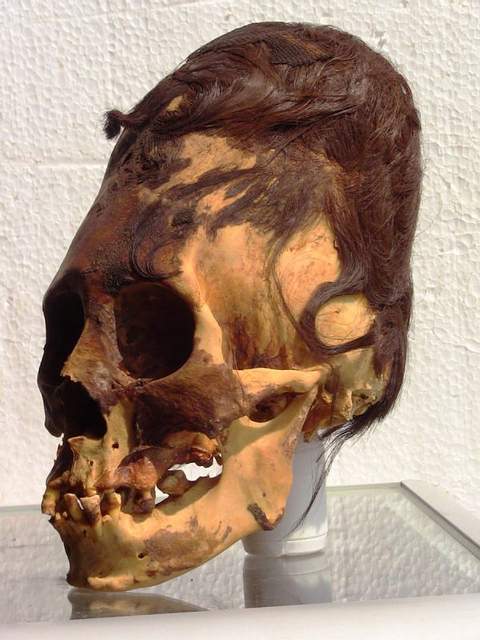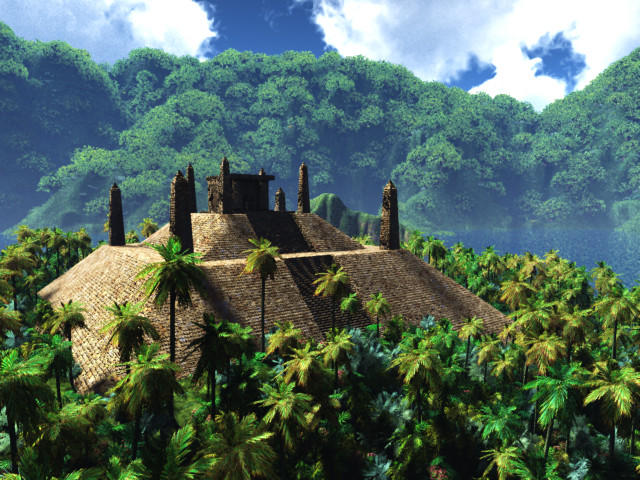I've travelled across Sundaland many times as an envoy and trader but I am afraid there are not enough life times for me to explore all of its wonders and beauty. It is a land of art, craftmanship and culture the likes of which has never existed. Yet it is also the place of turmoil and war, where various peoples chance at clambering up to heights of power and wealth through diplomacy or violence. Some succeed, many fail. The successful build monuments to commemorate their victories while the vanquished are forgotten in the deep mists of time. In any case, I am sure that this land will shine until the last days as a beacon for all that wish to rise up from our animal states and take our place as people of words and deeds when the final stories of the world are recounted.
- An Account of Sundaland by Alom Takal
Sundaland is the name for the Southeast Asian subcontinent that lay between current day Java, Sumatra, Thailand, Malaysia and Borneo. This area was flooded between 15,000 to 5000 BCE* as the last ice age came to an end.
Archeologists and historians working outside or on the fringes of mainstream academia hypothesise that this area could have been an early cradle of civilisation and perhaps even the real location of the fabled Atlantis.
Think of city states in jungles or along rivers, forest gardens and early agriculture, towering temples that priests use to track the motions of the stars and planets.
Economies are simple, based on trading commodities, tools and artefacts, perhaps early forms of currency. Literacy isn't common often reserved for a select group.
There are no horses. The main beasts of burden are the Elephant and perhaps the Water Buffalo. There are hundreds if not thousands of rivers that are traversed with canoes, boats and ships. The people of this land were the ancestors of the great Polynesian navigators who colonised the Pacific all the way to, Hawaii and Easter Island (perhaps even further:
Genetic studies link indigenous peoples in the Amazon and Australasia).
Religions are polytheistic and regional. Priests and shamans take consciousness altering substances in order to enter trance states and communicate with spirits and gods.
Societies rise and fall within hundreds of years, cities are swallowed up by the jungle then built on top of by their successors. Cities allow for specialisation and division of labour but also lead to decadence, overextension and overuse of resources.
A touch of Sword & Sorcery. If the gods are real they are capricious and need to be appeased. There's no good or evil as we know it today. Might usually makes right. If magic exists it's mysterious and hard to control. There are possibly monsters or the last remnants of ice-age animals in the deep jungles and high mountains. And perhaps strange ancient races of humans or even non-human sentient species.
This blog is a place for me to collect fictional content for entertainment only, mainly role-playing games, using accurate and real information about this time and place for inspiration. It's not my intent to present an archeological or anthropological investigation. Where I see fit I will set aside reality if it gets in the way of my fun. I do however present many scientific resources because truth is often stranger than fiction and there is a lot of evidence pointing towards this part of the world being important in the history of our species.
It is also not my intention to recreate or be in any way faithful to any of the cultures or civilisations that existed in the area in recorded history. Although it may be fun to take inspiration from for example the Khmer Empire there's no reason to believe there would be any similarities between it and cultures of the ancient past in the same way there is no similarity between modern day Iraq and the city states of Mesopotamia.
I also take a lot of inspiration from the OSR community in that I'm not looking to fill in all the blanks. Because I don't want to make people feel like they have to read up on lore and history in order to use what I've created. Instead I want to create a framework and tools that will leave people feeling empowered to create their own version of this setting.
Time Line
I'll assume that anatomically modern humans inhabited the area from around 70,000 BCE (
Wikipedia: Peopling of Southeast Asia) and that advanced civilisations developed and existed up until around 15,000 BCE when the sea level first began rising. That's around 55,000 years for civilisations to develop, rise and fall perhaps culminating at a technology level similar to Greece and Rome of Classical Antiquity or the height of the Han and Gupta empires, perhaps with even further developments in certain domains, an Atlantis type civilisation. Remember, unlike in many fantasy worlds with histories spanning tens of thousands of years, in real life great empires rose and fell in the span of a couple of hundred years.
I imagine there being six different periods but there's nothing to say that this cycle didn't happen several times over. Between the time of the Egyptian pyramids and the present day is 'only' a span of 5000 years after all.
1. Optional pre-human period. The time of elder gods and species.
2. Stone Age: Humans move in to the area (Homo Sapiens Sapiens and perhaps Denisovans as well?)
3. Early Period: Early civilisations. City-states and small nations similar to the Bronze and Iron Age societies. Think of Sumer, ancient Egypt, Harappan and Minoan civilisations. These are sustained by basic horticulture and agriculture and have early forms of centralised government or palace economies, bureaucracy, religion and trade between cultures. Perhaps an early golden age.
4. Middle Period: Period of alternate stability and turmoil after the early golden age. Wars, famine, ecological collapse, abandoned cities but also the birth of new societies and cultures built on the remnants of the past. Some rise and fall with a couple of hundred years, others last one or two millennia. Think of how Mesopotamian and central American civilisations rapidly followed each other. Lots of changes, lots of opportunity.
I think this potentially the most interesting period as a player and a creator. There is a lot of scope for societies with different levels of technology and cultural sophistication, there are many mysteries to investigate and challenging circumstances to deal with.
5. Classical Period: The height of the civilisation before the big floods. Perhaps there are nation states and empires, standing armies, a layered bureaucracy, intricate trade networks, complex government and religious institutions. This period might be similar in sophistication to the time of the Roman and Gupta empires.
These are societies that would lay the foundation for the Atlantis myths right before the big floods submerge the land and the survivors scatter around the globe to China, Egypt, Mesopotamia, North and South America.
I think of this as the most stable period. Perhaps there is an empire or state that spans the whole continent, or there are a set of large states that engage in occasional warfare. On the whole there is enough peace and stability to allow culture and technology to flourish.
6. Apocalypse Period: The floods begin and civilisations and societies start to descend into aggressive competition and wars. It's an apocalyptic period where civilisations are under extreme stress, sometimes even collapsing with consequences similar to what brought an end to the golden age. However this time the subcontinent is submerged under water due to a series of floods that last from around 15,000 BCE to 5,000 BCE*. Finally many inhabitants flee the area to seed civilisation across the world.
What Next?
If you want more inspiration (adventure locations, faction and culture generators, historical inspiration etc.) go here to find all the content I've created for this setting, grouped by type or theme:
Content Overview
Some resources that first inspired me to create this setting
Atlantis in the Java Sea: A great overview of the Sundaland civilisation hypothesis (10 - 15 minute read)
Eden in the East: Drowned Continent of South East Asia: Comprehensive overview of the hypothesis that in particular explores genetic and linguistic evidence.
Magicians of the Gods: The Forgotten Wisdom of Earth's Lost Civilisation: I first encountered Sundaland in this book. It's principally about the proposition that civilisation began much earlier than mainstream academia believes and how there is evidence around the world of a cataclysm that destroyed it scattering its people across the globe. Sundaland doesn't feature heavily, the book is more focused on the background and surrounding evidence for the cataclysm.
*The dates for when the floods first started are different from source to source, some say 20,000 years ago, some say 16,000. They're mostly consistent in that there are considered to be several sea level rises over the course of a couple of thousands years. Read more here:
Younger Dryas Impact Hypothesis






.jpg)












